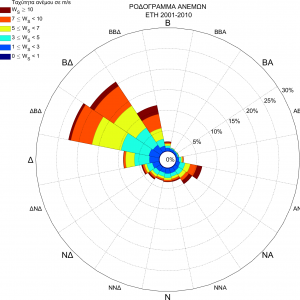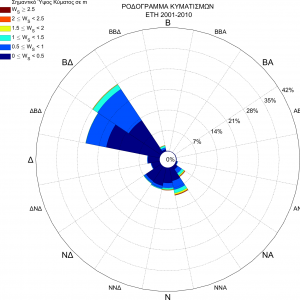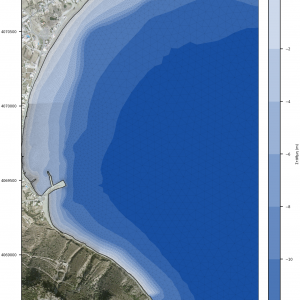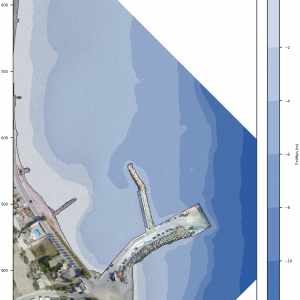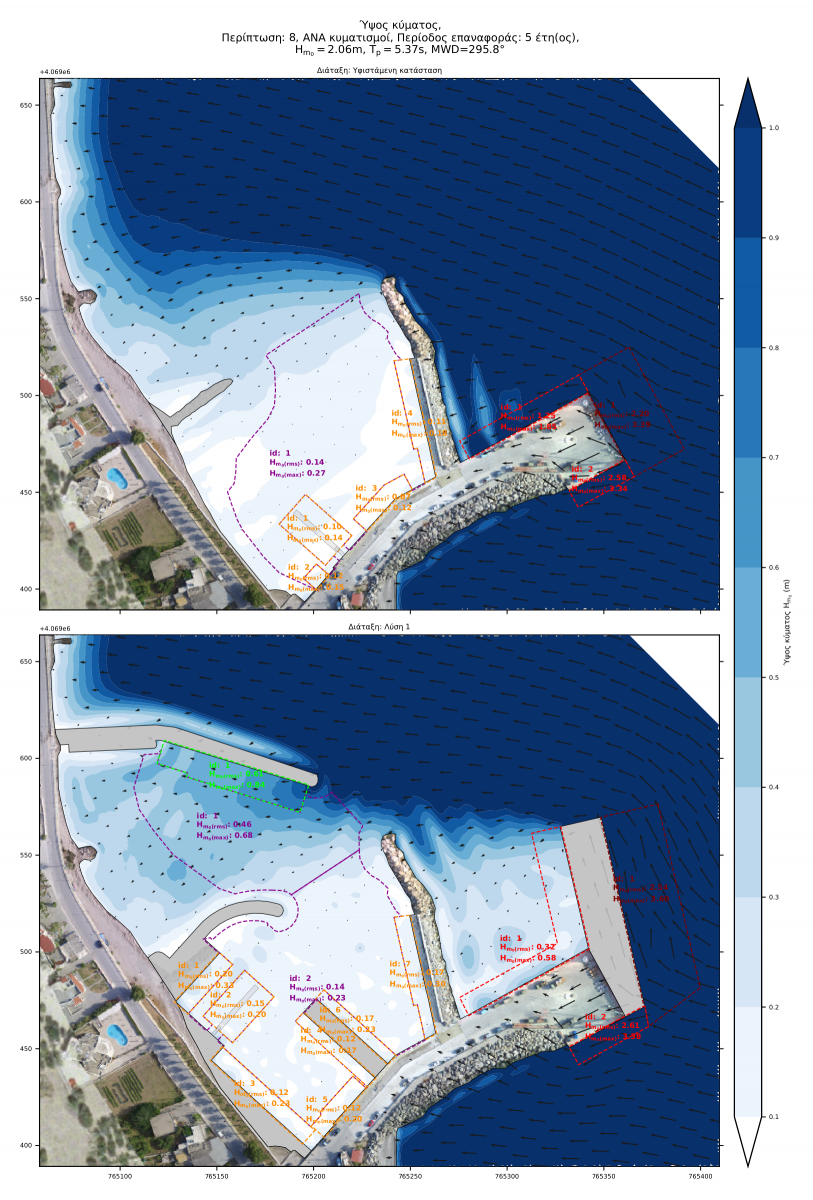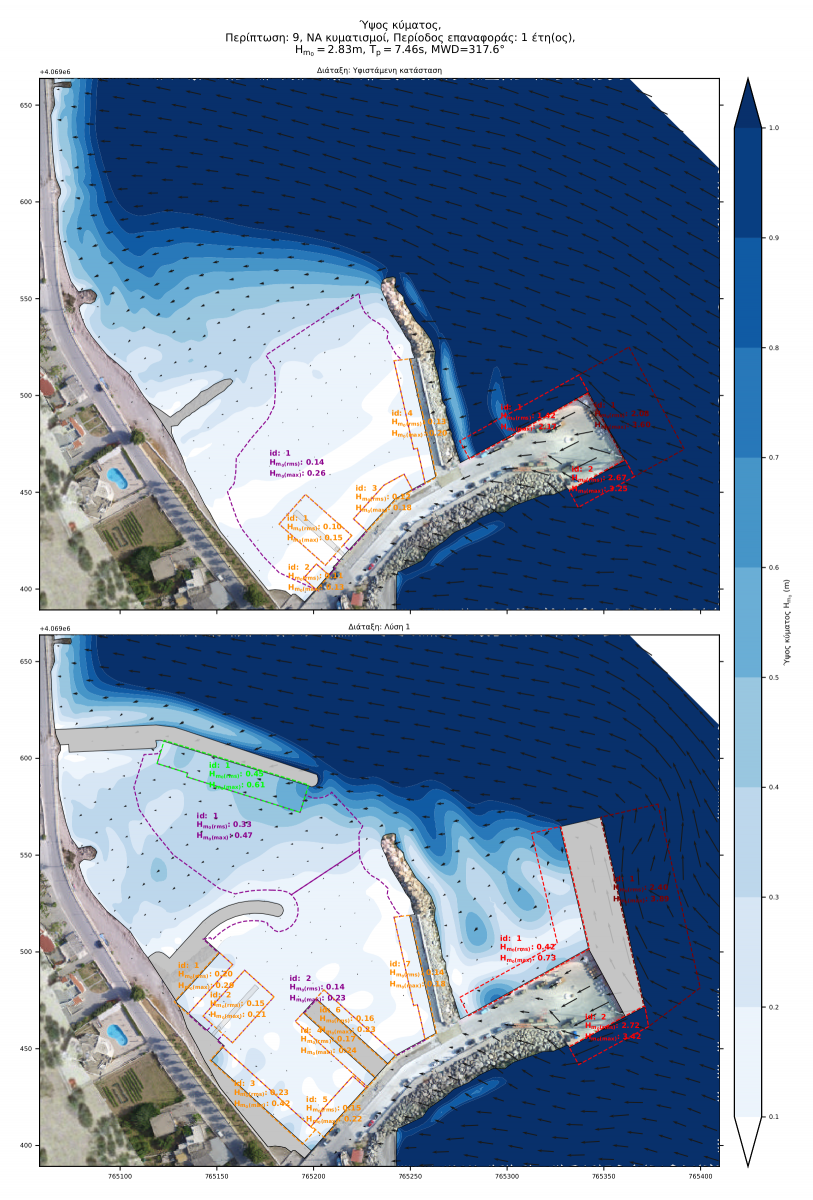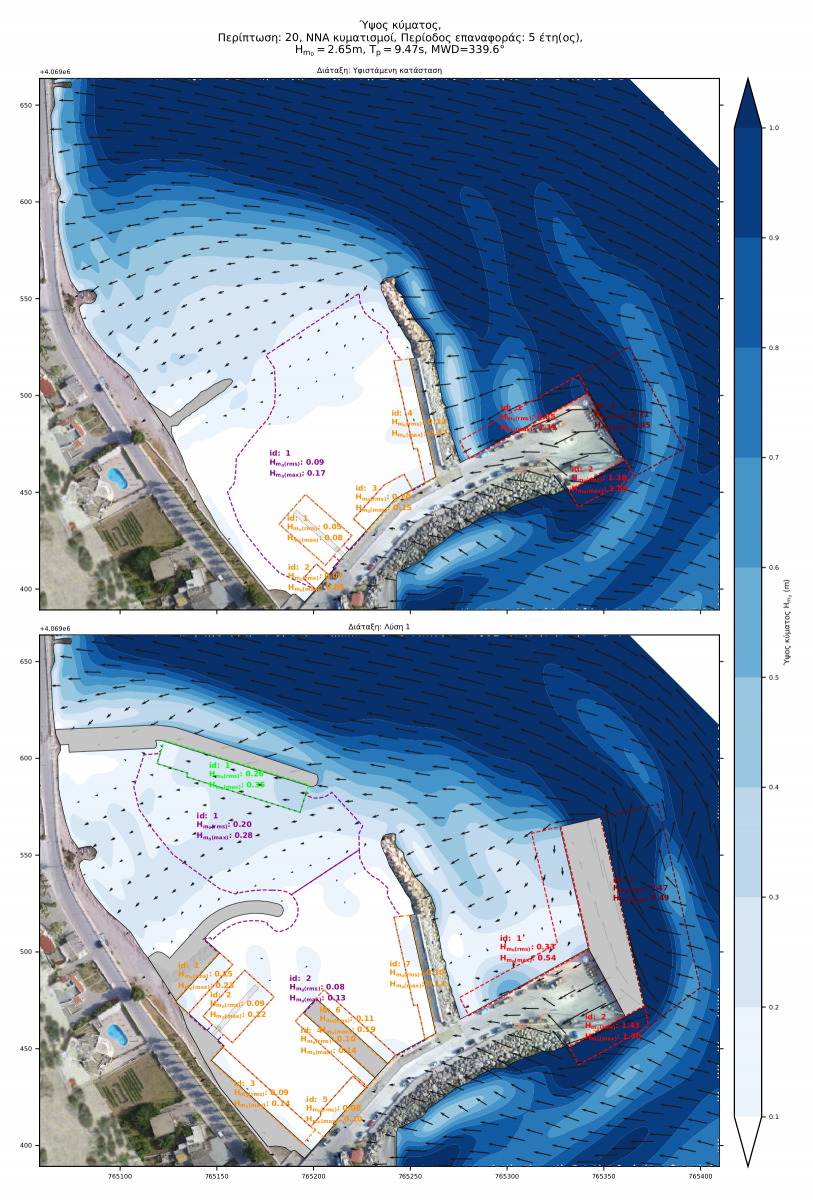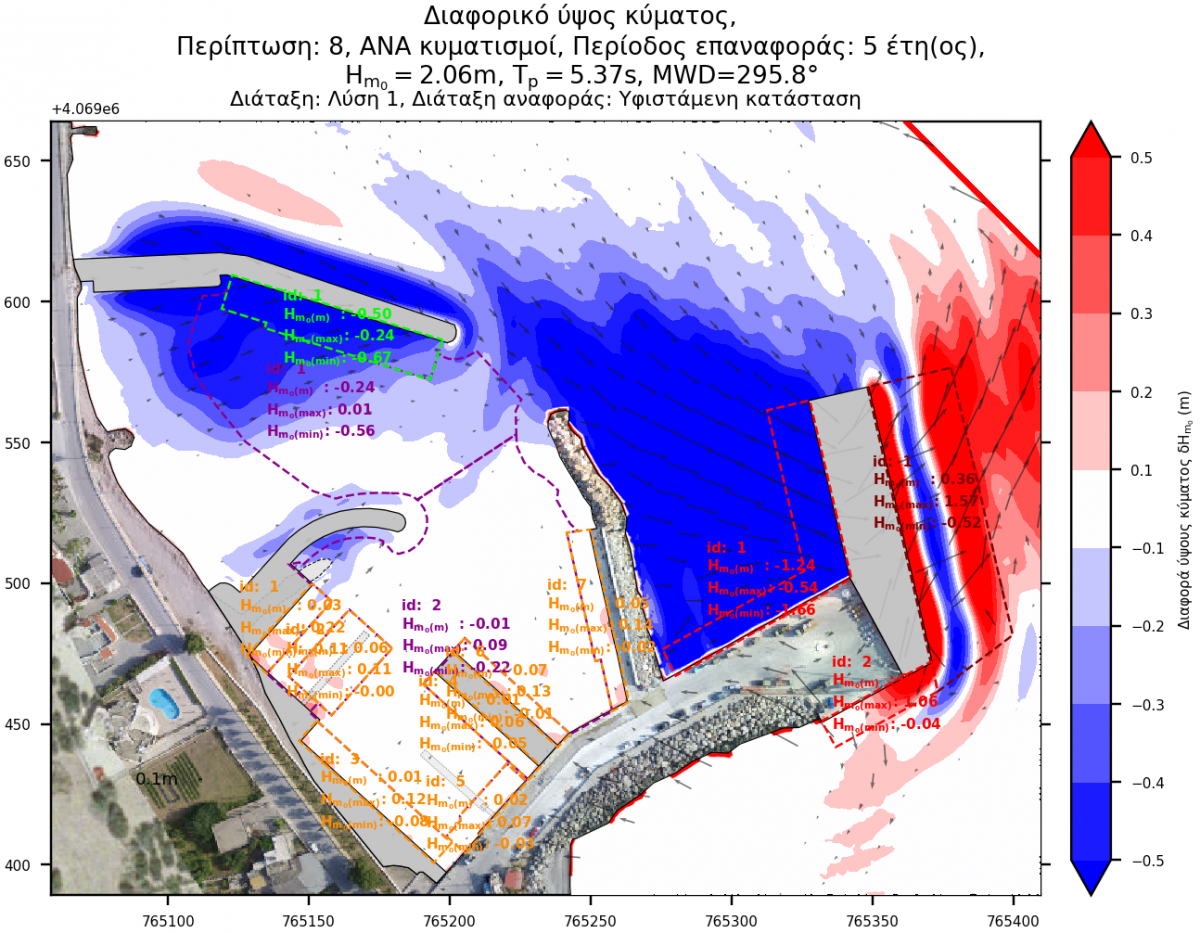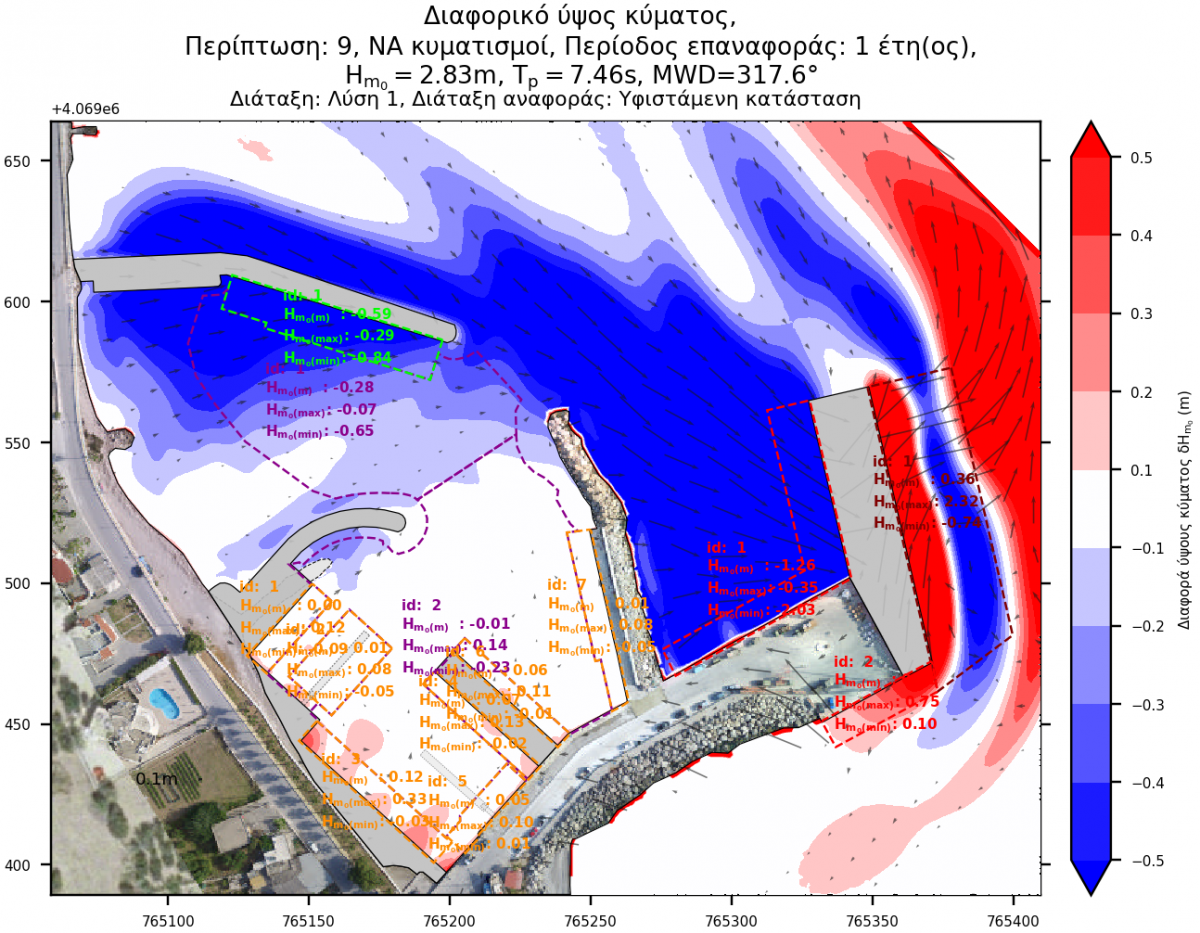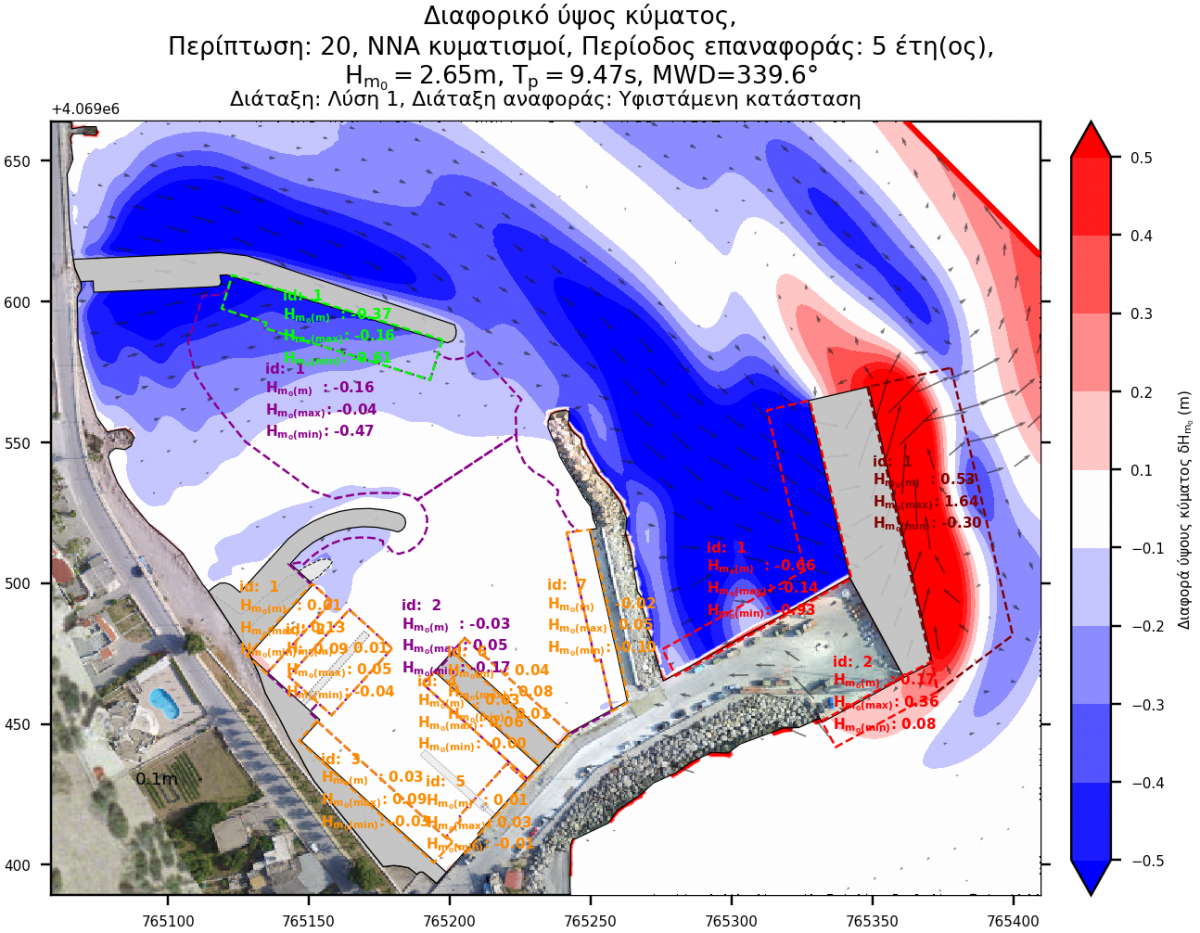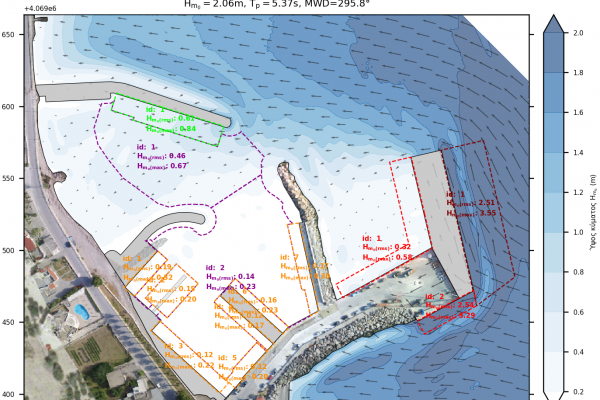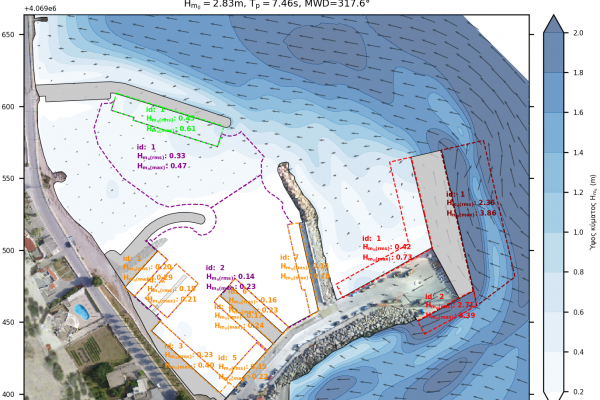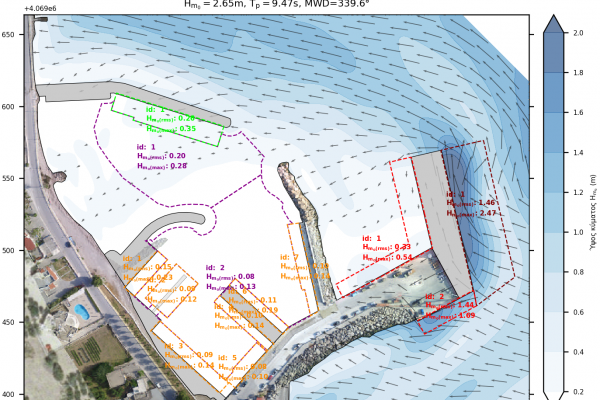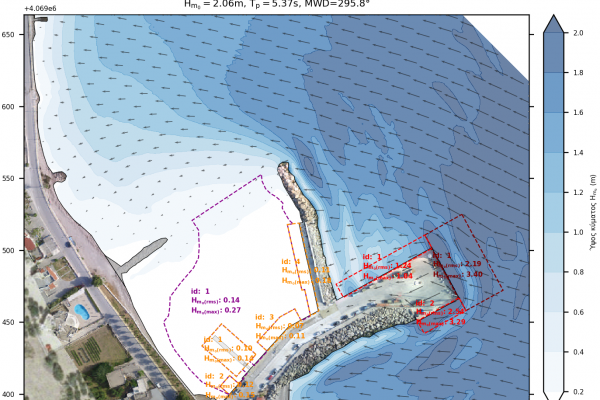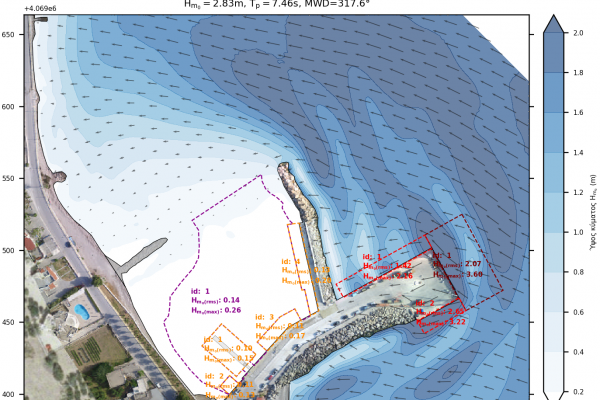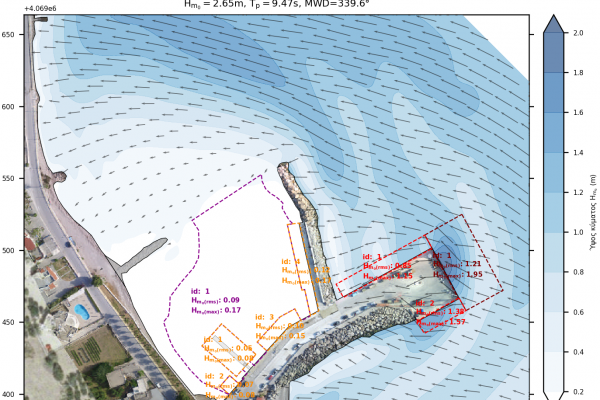Wave disturbance study of port facilities at Kefalos, Kos Island
The wave disturbance study is a supportive to the main study entitled "Improvement – Expansion of Port Facilities at Kefalos Port – Island of Kos" commissioned to CNWAY in September 2017.
Scope
Wave disturbance analysis serves as a decision making tool which enables port layout optimization through the assessment of berthing conditions. The scope of the study is to investigate wave conditions in the proposed port layout (as set out in the outline design), assess how this compares with the existing conditions and provide evidence that the proposed berthing facilities are acceptable from this standpoint.
Numerical modeling
Wave climate
Wave and wind data are derived from the WAMC4 and Skiron/Eta forecast model from node 941_216 with latitude and longitude 35.50o, 27.25o respectively. The node is located 2,7 kilometers away from the project site. The duration of the data covers the period between 2001 and 2010.
Model characteristics
The simulation is usually performed by employing two separate models, the offshore and the wave disturbance model. The former extends from the position of offshore wave conditions (a node of the regional WAM wave model) up to the shore, and its role is to define the boundary conditions for the wave disturbance model.
- Offshore model: It extends 3,1 km along the N-axis and 1,8 km laterally. It covers an area of approximately 3,4 km2 and consists of 75.000 elements and 39.000 nodes
- Wave disturbance model: It extends 700 meters along the N-axis and 370 meters laterally. It covers an area of about 140 acres. and consists of about 148.000 elements and 75.000 nodes
A total of 22 wave cases corresponding to 66 simulations were executed, which consist of:
- 22 TOMAWAC simulations to propagate wave conditions from the WAMC4 regional model node to the project location,
- 44 ARTEMIS simulations, for the calculation of wave disturbance, 22 for every wave case, 2 layouts (Existing layout, Proposed layout).
Results
For further analysis and objective comparison of the results, areas of interest have been defined for every layout. For each area, the following parameters have been calculated:
- Active (Ηm0(rms)) and maximum wave height (Hm0(max)) for absolute disturbance and
- Active (Ηm0(rms),), maximum (Hm0(max)) and minimum wave height (Hm0(min)) for differential disturbance
Absolute disturbance plots
Absolute wave disturbance plots show the results of each layout for each wave case, as derived from the simulation.
Differential disturbance plots
Differential wave disturbance plots result from the algebraic subtraction of the wave disturbance between the compared layouts. The "Reference Layout" disturbance is subtracted from the disturbance of the solution under consideration. Positive differential disturbance (red gradient), means the layout under consideration causes more disturbance than the reference layout whereas negative differential disturbance (blue gradient), means the layout under consideration causes less disturbance than the reference layout.
This easily identifies the positions as well as the extent to which each layout has an advantage / disadvantage over the "Reference layout". Below is an example of differential wave disturbance of the proposed works (Layout 1) with respect to the Existing layout.
Quantitative evaluation
The score is calculated using an evaluation model that takes into account the following wave disturbance parameters for each zone:
- Active wave height (Hm0(rms)),
- Maximum wave height (Hm0(max)),
- Wave height exceeding predefined limits of allowable disturbance (Hm0(exc)),
- Zonal percentage area exceeding predefined limits of allowable disturbance (PAexc).
The following table summarizes the parameters calculated for each boundary indicated in the wave disturbance plots, as well as the individual score obtained.
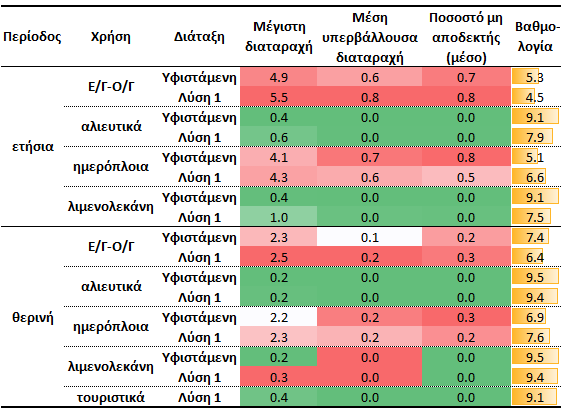
Conclusion
Based on the results of the wave disturbance analysis it can be concluded that wave disturbance in the existing port layout is overall tolerable apart from the multi-purpose terminal which is exposed to waves from offshore.
The expansion of the multi-purpose terminal, as set out in the proposed port layout, acts as a breakwater which cuts off waves coming from the south sheltering the area behind and providing calmer wave conditions. New berthing positions for fishing vessels near the port entrance are subject to increased disturbance due to wave reflection, however they remain operational for larger boats.
Wave conditions during summer, when the port operates at higher capacity, are milder than the annual period, and as a result, both solutions present low rates of unacceptable disturbance, which in any case applies to the Multi-purpose terminal. The port facility intended for the touristic vessels, as set out in the proposed works, does not encounter wave disturbance during summer when it is expected to operate.
Overall, the analysis has shown that both scenarios (i.e. existing layout, proposed layout) are close in terms of score and hence they are considered equally effective against wave disturbance.

